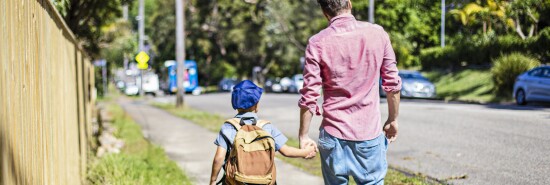
The key to offering religious education to public school students
Joel Penton
Video Embed
When the Bible and prayer were being removed from public education decades ago, a unique window of opportunity was opened. In 1952, the Supreme Court decision Zorach v. Clauson determined that the practice of “released time religious instruction” was constitutional and therefore legal in all 50 states.
This critical Supreme Court decision states that public school students can be released in the middle of their school day to receive religious education as long as the program is privately funded, off school property, and permitted by students’ parents.
REPUBLICAN DEBATE: RNC ANNOUNCES THE EIGHT GOP 2024 CONTENDERS WHO MADE THE CUT
More than 70 years later, the ruling’s impact is being felt this month as children head back to school.
At LifeWise Academy, we are seeing exponential growth and widespread adoption of our released time program that started with just two schools in the fall of 2019. Despite weathering a pandemic, more than 300 schools across 11 states will be served this year by a LifeWise Bible class. Hundreds more communities are actively working through our launch process. And this phenomenon snowballed almost entirely out of community interest from parents.
I’m now convinced that released time has been the single greatest missed opportunity to influence the next generation of public school students with biblical literacy. Though legal for decades, released time has remained almost completely unknown to people of faith. The few released time programs that have existed tend to operate informally on a smaller scale.
Why has released time been so underutilized? It’s likely that the lack of awareness has to do with timing. The 1952 Zorach v. Clauson decision was one of the only Supreme Court decisions in favor of religious education in almost 20 years. It was likely lost in the details of the overall crackdown on religious education in public schools during that era.
As many parents have observed, religious education improves the lives of students from all backgrounds. Bible education doesn’t simply provide knowledge. It inspires wisdom and shapes character, which can affect students and their communities on a deeper level than any impartation of knowledge ever will.
When the National Council on Crime and Delinquency studied a released time religious instruction program in Oakland, California, it found that studying the Bible along with the school curriculum helped the students develop good character. Likewise, the National Center on Addiction and Substance Abuse at Columbia University reported that “rates of drug and alcohol abuse have been found to be significantly lower in those who are religious compared to their nonreligious counterparts.”
Biblical literacy during school hours is so effective that more students and families are opting in with every passing semester. In Van Wert, Ohio, more than 95% of elementary school students are participating in our released time program.
Many might see what we’re doing as an attempt to reclaim “the good old days” when religion and prayer were a part of public education. Indeed, there were many good things that we can point to about education in the past, but there are also things we wouldn’t want to repeat. So instead of trying to turn back the clock, our team is focused on providing real solutions for today and the future.
School-aged children are facing a mental health crisis. Anxiety has been on the rise since the pandemic. Bullying and poor behavior have been colossal problems for public schools nationwide as well. Our children are lacking the foundation that faith can provide in the ever-shifting sands of the secular world. As Samuel Weber and Kenneth Pargament wrote in Current Opinion in Psychiatry, “Research has shown that religion and spirituality are generally associated with better mental health [as well as] lower levels of depressive symptoms, few symptoms of posttraumatic stress, fewer eating disorder symptoms, fewer negative symptoms in schizophrenia, less perceived stress, lower risk of suicide, and less personality disorder.”
CLICK HERE TO READ MORE FROM THE WASHINGTON EXAMINER
For centuries, organizations have been imparting Bible teaching and the value of faith to public school students before and after school. But the students who most need to be reached are often missed due to logistical and scheduling challenges. Operating during school hours, with the permission of both parents and school administrators, has allowed us to integrate into the school’s culture better and reach those previously left out.
Reaching public school children with the wisdom of Scripture during school hours, all within the bounds of the law, offers the greatest solution to a plethora of crises children deal with today. Most people have missed this opportunity for over 70 years. But better late than never. It’s time to get to work.
Joel Penton is the founder and CEO of LifeWise Academy. He is the author of During School Hours and lives in Columbus, Ohio, with his wife, Bethany, and their five children.
